RedTrack is an ad tracking solution that processes and analyzes data traffic about media buying. The platform is used by affiliates, media buyers, brands, etc. and allows them to understand the traffic they buy or organically use.
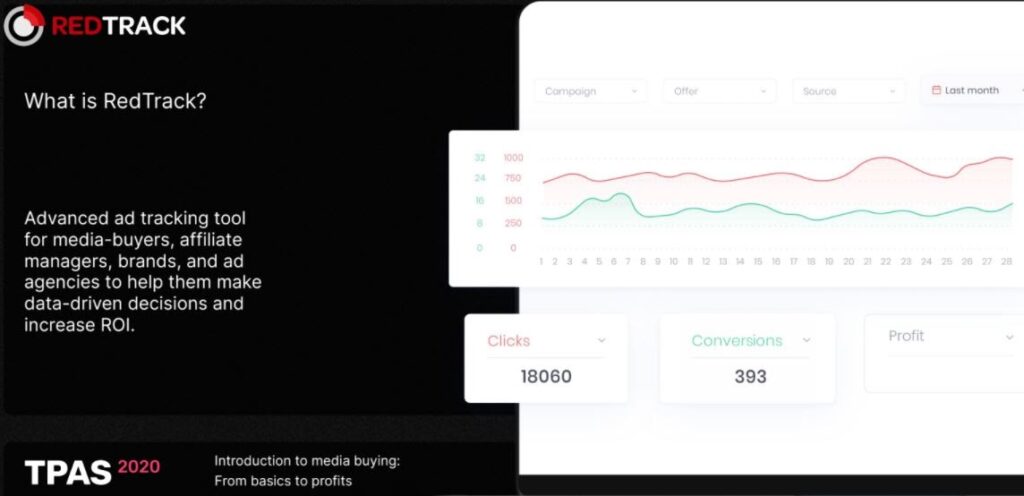
Basics of affiliate marketing
There are two ways to sell a product. You can advertise it directly or apply affiliate marketing.
When it comes to affiliate marketing, there are three main players: an advertiser, a customer and an affiliate between them. An affiliate runs promotion instead of an advertiser and receives a commission for each sale. Such cooperation can be direct or with the help of an affiliate network, which is a kind of a marketplace with different offers.
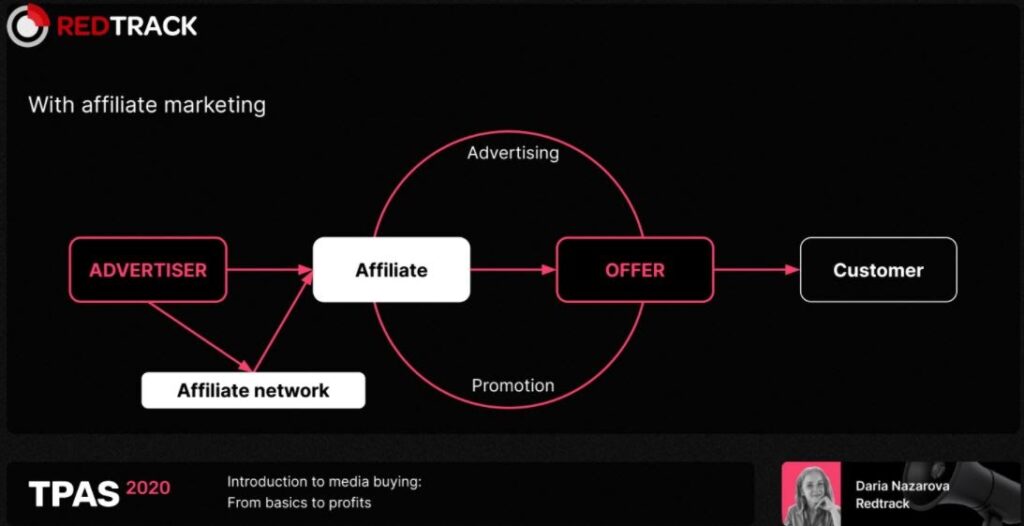
Affiliate marketing is a very big industry that is not limited by travel niche and also covers gaming, finance, dating, and others that, in their turn, fall into different sub-niches. In fact, you have dozens of opportunities to earn money with affiliate marketing.
How offers monetize
In the webinar, Daria presents [04:34] five monetization models:
- CPS, or cost per sale (Advertiser pays for a sale)
- CPA, or cost per action (Advertiser pays for certain users’ actions)
- CPI, or cost per install (Advertiser pays for an app installation)
- CPL, or cost per lead (Advertiser pays for a lead)
- RevShare: Advertiser does not pay a flat price but a % of the sale
These are the most popular models among advertisers, and you may even encounter a combination of them in some affiliate programs. Each model has its peculiarities that are worth paying attention to when choosing where to start. For example, CPS is mostly used by big companies and brands, while CPL is less commissionable so it might bring you less money.
How to choose an affiliate network
Choosing the right affiliate network is crucial because it directly influences the profitability of your campaigns.
First, pay close attention to the network’s offers. Niche-specific networks are likely to include exclusive and fruitful offers. Thus, if you already have your eye on a specific niche you want to develop, choose the corresponding affiliate network.
Second, check whether an advertiser you’d like to promote offers direct cooperation. If you find direct affiliate programs without mediation by networks, chances are you’ll receive higher payouts.
Third, check the network’s reputation and whether it can be a reliable partner for you. Also, investigate payment terms and support that the network provides. Frequency of your payment is something you need to be aware of at the very beginning.
Travel affiliate marketing
This industry differs from others significantly, as it features:
- High payouts
- Friendly social traffic
- Branded offers
- Big local opportunities
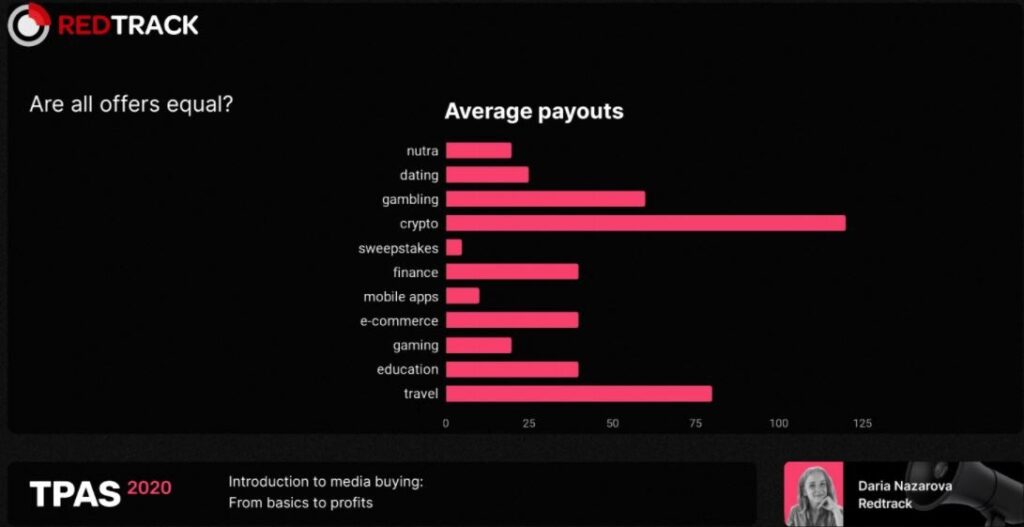
However, the niche also has disadvantages to be aware of:
- High competition
- Long-term payouts
- Low customer LTV ratios
- Highly-targeted traffic
The positive trends that are listed above overweigh the negative ones in a long-term perspective. Moreover, travel brands are often popular among customers, so you do not need to actually introduce them, as the audience is familiar with the names from the start.
How to promote offers
Daria explains [13:06] that you can easily do affiliate marketing without a website. Having a blog or travel website allows you to organically receive a lot of clicks on your links and widgets, but it’s not the only possible way to run travel offers.
There are free and paid sources of traffic that you can drive to affiliate links. Free sources include blogging/guest posting, email, social networks, webinars, forums, or a word of mouth. Paid traffic comprises Google ads, ad exchanges/PPC traffic, or ads on social networks. The main disadvantage here is that you need to pay for it, and pay quite a lot, to start getting profit. You also never know whether your investment will pay off so it might be pretty stressful and uncertain at the beginning.
Yet, with paid ads you have total budget control and get immediate results. It is very flexible and allows accurate targeting so you can choose where, when and to whom your ad is shown. It is also measurable, so you can always track your success and see how many clicks and for what ad you get and optimize campaigns accordingly.
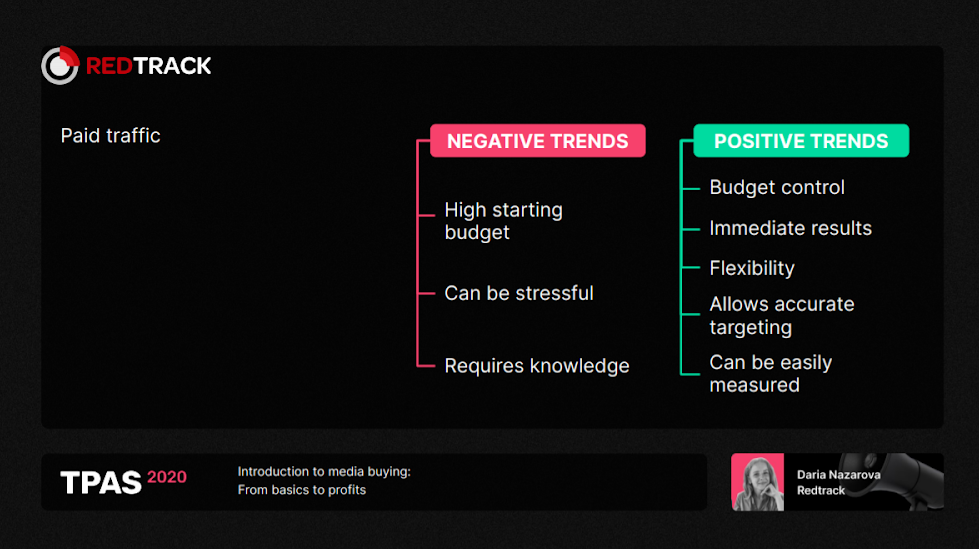
Ad exchanges such as Taboola, Outbrain and RevContent are places where advertisers buy spots to place their banners. There are three models here: you can pay for each click on your banner, for a thousand impressions, or a set amount for banner placement regardless of clicks/views.
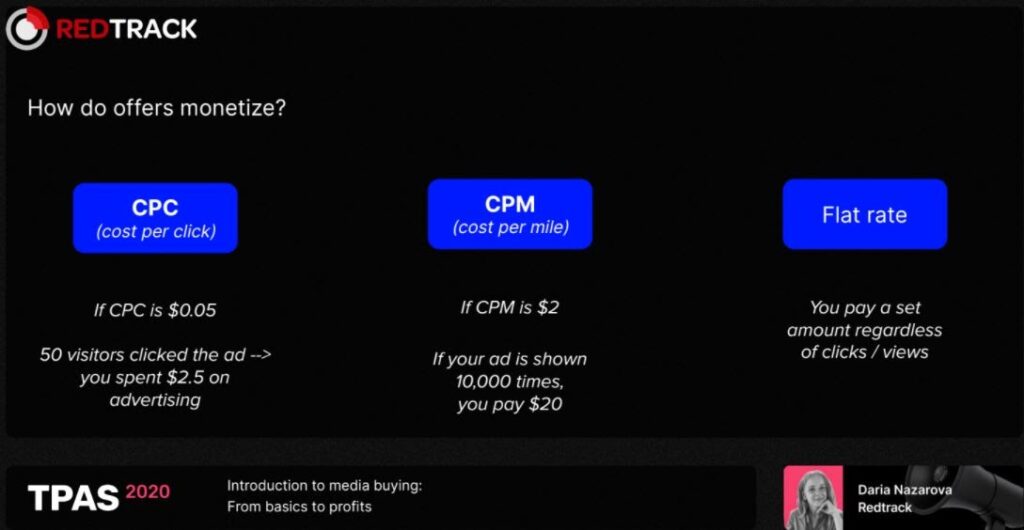
Types of paid traffic
Let’s look at the most popular types of paid traffic that affiliates may use.
Push traffic
It looks like a short message that is shown in the corner of your laptop or on mobile devices. It is popular, cheap, and convertible.
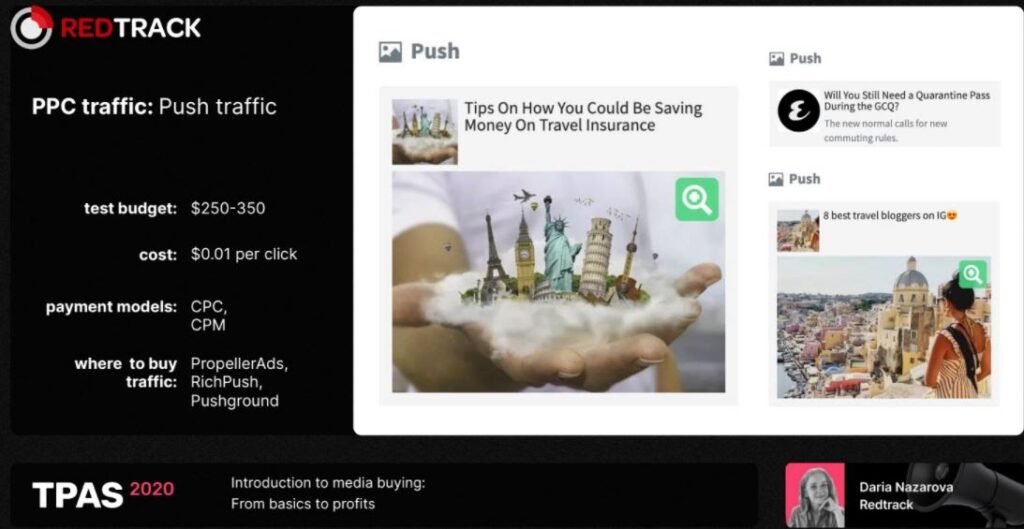
Pop traffic
It looks like an intrusive pop-up window that appears when you scroll a page on the internet. It used to be very popular, but now it is not always considered advisable especially for travel offers. It is intrusive, but cheap.
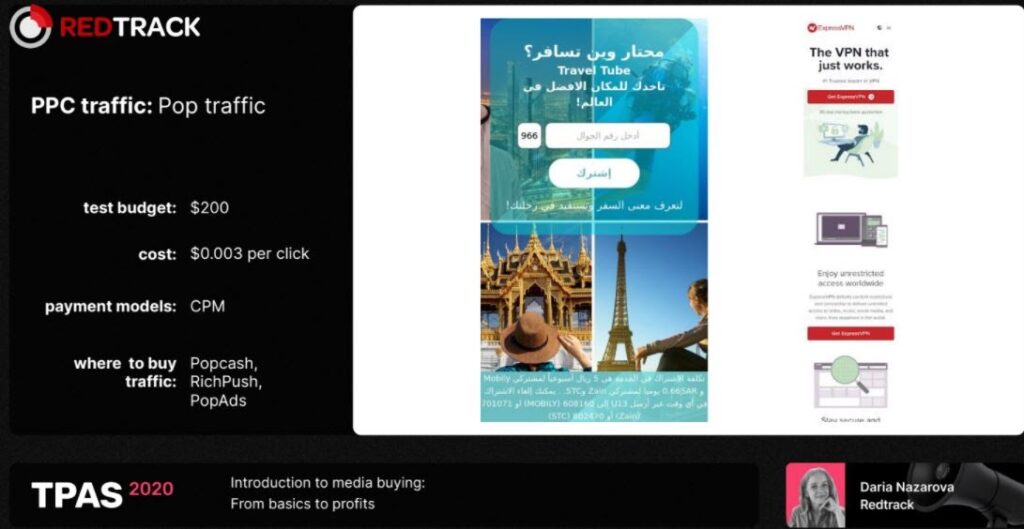
Native traffic
It does not look like an ad: you showcase different articles or products that look like a suggestion, but are actually an advertisement. It is the most expensive traffic type.
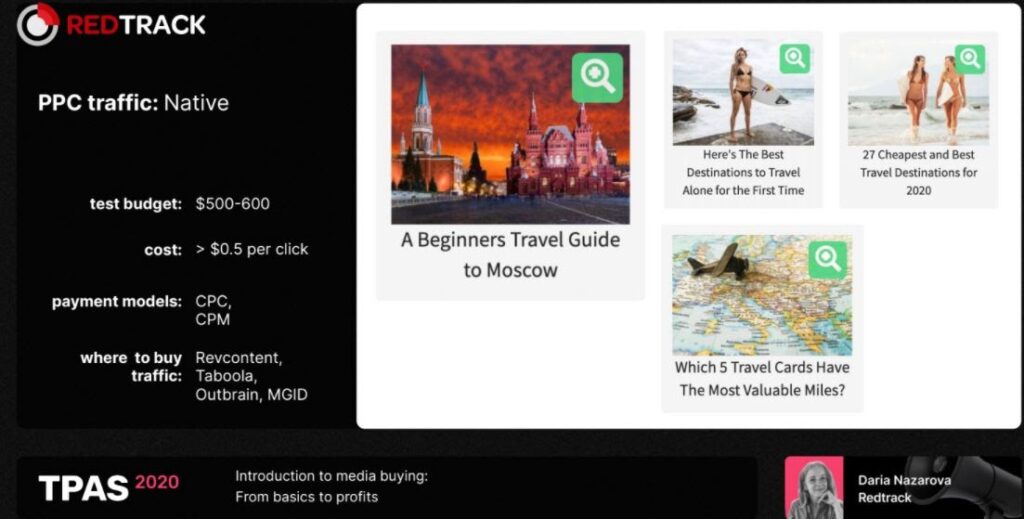
Tips for traffic monetization
In the webinar, Daria shares [24:15] tips on how to make money with affiliate marketing.
- Targeting is the key element. Analyze the data that you get to establish successful targeting.
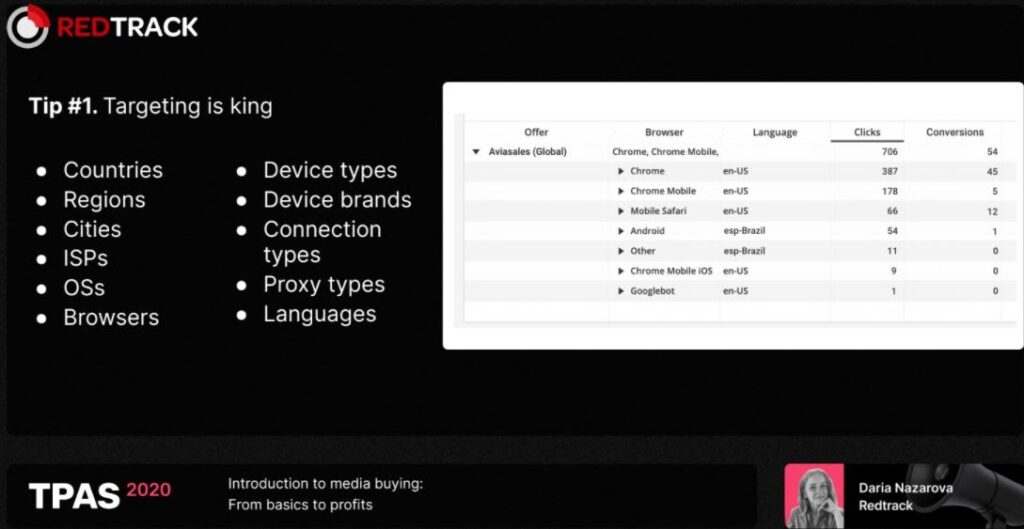
- Don’t get distracted by the wrong metrics. With the paid ads, you have lots of data and statistics including clicks, conversions, earnings per clicks, unique clicks revenue, profit, and others that can easily get you off track. Customize your dashboards and put on the metrics that really influence your decisions.
- Run A/B testing the right way. Only choose tests that will show you the results that influence your campaign.
- There is no success without automation. As media buying is a time-consuming process, put auto-pilot on as many processes as possible.
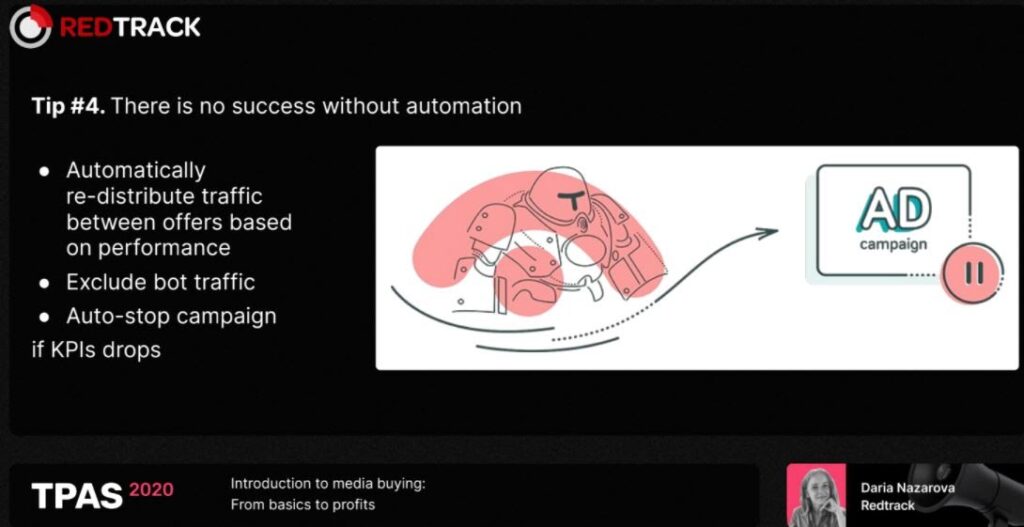
- Low CR is not always your fault. CR is a correlation between conversions and clicks. The real reasons for the low CR might be: quality of the traffic, wrong offers, inadequate ad placement, wrong tracking technique, narrow targeting, bot traffic.
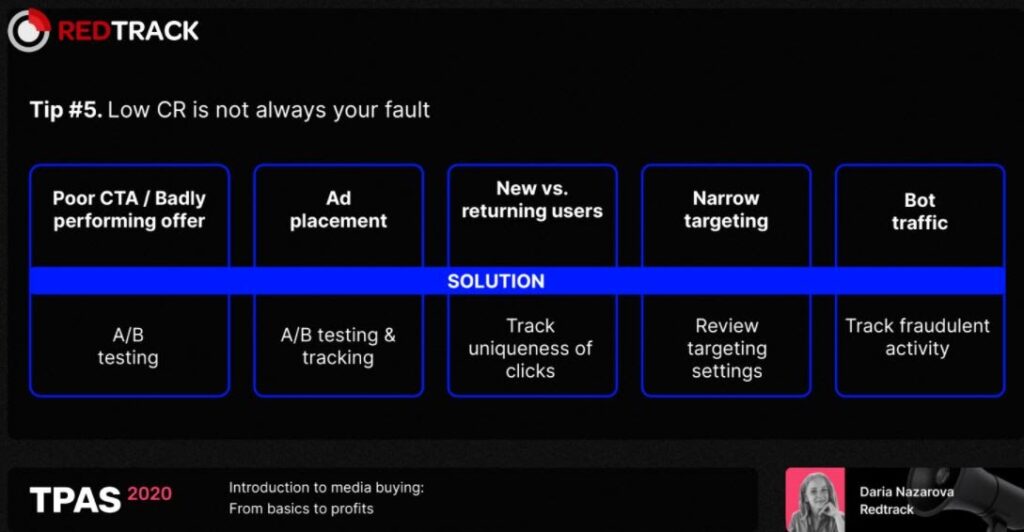
Presentation
You can download the presentation from the webinar at this link.



